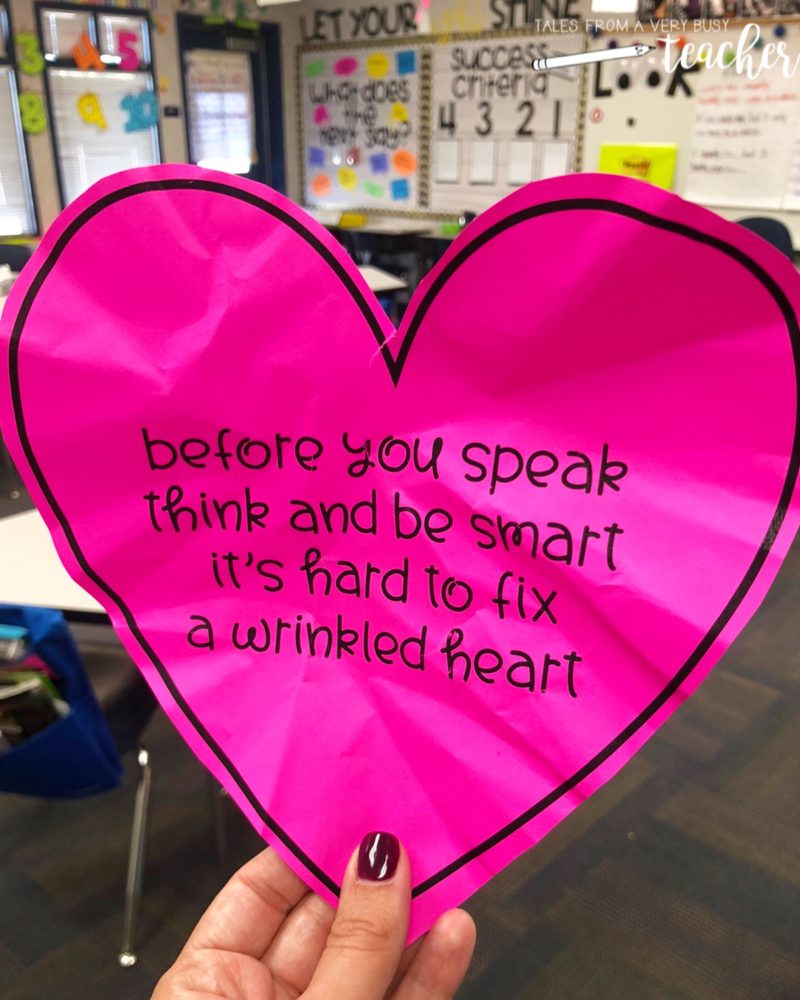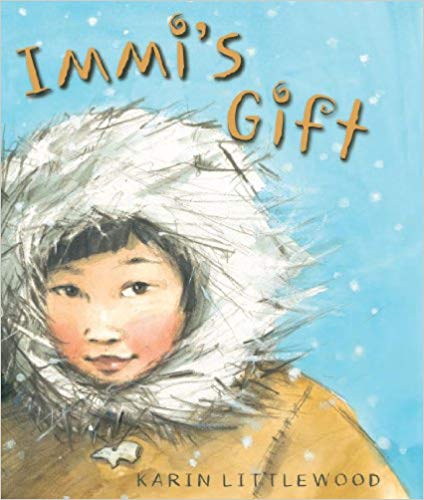Whether you’re celebrating a week-long kindness themed week at your school or you’re looking for kindness activities to complete with just your class, I’ve got you covered!
It’s important that we explicitly teach empathy, kindness, and compassion to our students. We cannot assume they already know what these traits encompass. And sometimes, it’s just nice to have a reminder of what kindness entails.
1. Kindness Bulletin Board
At our school, we had a week-long celebration of kindness. We celebrated during the last week of February. Since Kindness Week fell closer to St. Patrick’s Day than Valentine’s Day (like the Great Kindness Challenge) we created a large school bulletin board to show that “Kindness is Golden.”

To help us create this board, teachers had their students write about different ways they could show kindness, using the sentence frames that were provided to them. The students wrote their sentence on gold coins. We used the coins to create a display at the front of our school.
Each morning of Kindness Week, we had our 6th grade student council representatives lead announcements over the loudspeaker about Kindness Week, our kindness challenge for the day, and a kindness quote.
We also worked as a school to reach 1,000 Random Acts of Kindness (RAKs). If teachers, yard aides, custodians, office staff, librarians, aides, administrators, or anyone from our school community caught students completing a random act of kindness (RAK), students earned a blue BEST Ticket. They wrote their RAKs on the back of the ticket and turned it into the office. We held a raffle every day and the winners got to choose a prize from our Be Your BEST treasure box.
Here’s an example of another kindness bulletin board we displayed at our school! Click here to get the titles, hearts, and coins for your school.

2. How Full is Your Bucket?
Watch the YouTube version of How Full is Your Bucket?
Or if you have the actual book you can read it instead.
Lead the class in a discussion about what it means to fill someone’s bucket.
Create a class chart of ways we can fill each other’s bucket as friends, family members, students, etc. You can have students follow along using the graphic organizer. They’ll need to use these ideas later for writing on a bucket.

Students can share and discuss ideas for filling buckets.
Finally, students can write down different ways they will fill buckets onto these buckets.
3. Make Joy Happen
Start by showing this short clip to students, Make Joy Happen. Try to start it by not prefacing it with anything.
After watching the clip, gather students’ ideas about what they think the video is showing or trying to explain. There are multiple messages:
- Treat others the way you want to be treated
- Understand other people’s perspectives (empathy)
- Spread kindness and get kindness in return
During the discussion, make an anchor chart of students’ ideas.
Then have students share ideas with partners and provide students with sentence frames. You can write the sentence frames on the anchor chart.
Ex. The message is __ because __
When ___ then ___
Because __ then __
The meaning of __ is __
After discussion, you can have students use this recount graphic organizer to explain what the video was about.
-or-
Have students connect the video to their own lives based on recent experiences or ways they can show kindness based on what they saw in the video.
Ex. sentence frames:
A connection I can make is ___
Based on the __ I can ___
4. Wrinkled Heart Activity
You’ll need to cut out a giant heart from construction paper for this activity. Or you can print this one onto pink or red paper. It has a nice rhyming phrase that can be displayed after you complete the activity.

Show students the heart and ask students to share examples of unkind actions (school appropriate). If they feel comfortable enough, they can also share real-life experiences they may have had at school. As each unkind experience is shared, fold the heart. Keep folding the heart for each unkind gesture until the heart is completely folded. Then ask students to share positive experiences and kind gestures. For each positive experience or a kind gesture, unfold the heart. Complete the sharing until the heart is complete unfolded and open.
The visual of the heart is an explanation that when unkind things happen it can hurt our hearts (the folds in the heart). As we experienced kindness and forgiveness, our heart opens back up but it is still wrinkled symbolizing that even if we apologize for unkind actions, our unkind actions can still leave a negative mark on someone’s heart.
Give students a smaller heart and have them write different ways they can be kind.
With my class, I read a story (that I wrote) about a boy name Troy. He was having a bad day, and each time something unkind happened to him, I folded his heart. When we were done reading the story, we went back and thought of different things that could have happened to help his heart. You can find the story here.
5. Stand in My Shoes
Have students listen to the story Stand in My Shoes.
After listening to the story, tell students that empathy is the ability to understand and share feelings with another. Then ask students examples of empathy they saw in the video.
If you need to, go back and watch certain parts again to really understand the examples shown in the story.
Create an anchor chart to chart your ideas about empathy.
Use these shoes to have students write about what it means to walk in another’s shoes. They can write in the bottom part of the shoe and then decorate the shoe.
6. Color Your World with Kindness
Show this video, Color Your World with Kindness, and discuss the main idea and what happens throughout the video.
Explain that kindness is spread from one to another, like a domino effect.
Have students brainstorm (aloud or on paper) ideas on how they can be kind. You can have a brief class discussion on their choices.
Explain to students that being kind and showing acts of kindness is a way of living. Explain that there are different quotes that help us remember to stay kind and give us the motivation to continue the kindness chain of events. Give students the kindness quotes. Ask students to pick a quote they identify with the most. Have students write the quote on the bottom of the self-portrait page, and then they can draw themselves holding the quote. Here is an example. If you would like, you can have students type the quote, print out the paper and then draw their self-portrait. You can find the template here.
7. The Olive Branch
Show this video, Olive Branch, and discuss what it means to feel like either character.
Read the Compassionate Informational Text and annotate with the annotation bookmark.
Guide students through the annotation, and hold a discussion while annotating.
After annotating with students, ask the discussion questions. Have students answer the questions (as a whole group or with A/B partners) using their discussion frames.
8. Enemy Pie
Show students the story Enemy Pie and have them use the graphic organizer to determine the central message of the story. Pause at important moments in the story to have students discuss which important details they’re writing down.
After listening to the story, discuss the implications of kindness, compassion, and assuming best intentions.
Students can have A/B conversations using their graphic organizer to discuss the central message.
9. What Would You Do?
Read the “What Would You Do?” scenarios and discuss student responses in a whole group format. You can also break the students up into groups to discuss the scenario cards. These would be great cards to use during a morning meeting or during a circle time with your class.
Discuss that making kind choices and being kind is the key to all of their answers.
10. Celebrate Diversity
Celebrate diversity with your class by reading about different languages, cultures, and beliefs. The National Education Association has a great list of diverse stories you could read to your class. Choose one book daily and hold a read aloud. You can even take suggestions from your students about their favorite books that represent their family’s culture.
Here is a list of my favorite books that celebrate diversity. You can click the affiliate link to find it on Amazon.











